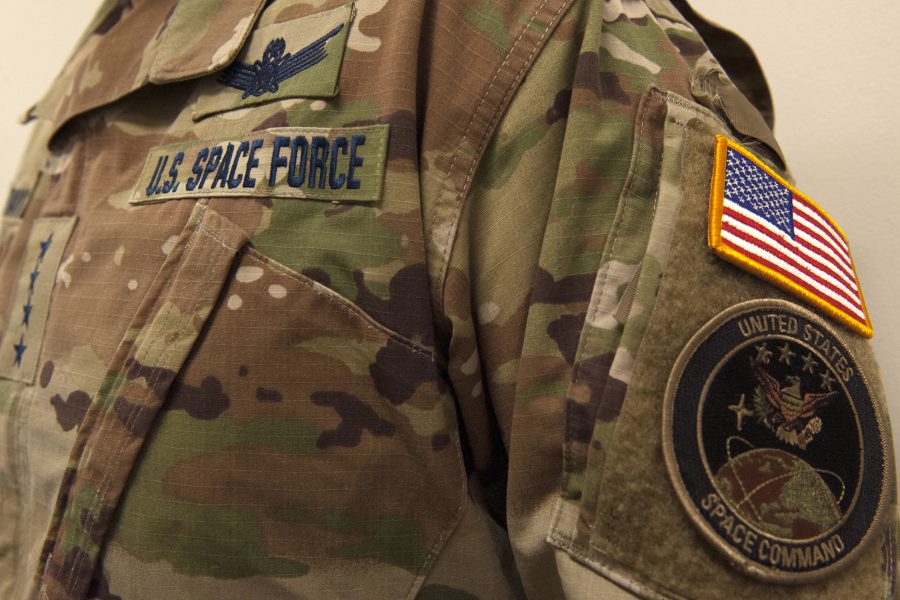More than 1,000 Airmen have signed up for the new Space Force in the first two weeks of the month-long voluntary transfer window, Space Force Vice Commander Lt. Gen. David Thompson said May 12.
The initial transfer period opened May 1 to allow Active-duty Air Force officers as well as enlisted members in existing space careers and certain other jobs to formally join the Space Force. Those who worked with Air Force Space Command before the Space Force was created in December were automatically assigned to the new service, but are not yet official members.
“We’re already into the thousands in terms of the numbers of folks who have applied,” Thompson said during an AFA Mitchell Institute for Aerospace Studies event. “Not being exactly sure where we think we should be, we feel like we’re in a good place in terms of those numbers.”
The vast majority of space operators are requesting a transfer, he added. The Space Force anticipates fewer than 7,000 Active-duty Airmen will come in during this first window. USSF is ultimately expected to comprise about 15,000 employees.
“We saw a large number of people who chose to apply on May 4,” Thompson added, referencing the pseudo-holiday for “Star Wars” fans. “A little bit of space humor there, ‘May the Fourth be with you.’”
The service is still mulling new hiring practices and whether it should employ traditional Guard and Reserve units.
Bringing Airmen into the Space Force is also shaping how the new service negotiates with the rest of the military about who should own what space assets and personnel. Most Army and Navy space professionals are slated to start transferring in fiscal 2022, though some could come in earlier.
“Space Force will release further details for a limited inter-service transfer program for other sister services for FY ‘21,” service spokeswoman Lynn Kirby said.
USNI News reported in March that the Navy expects to move fewer than 100 people into the Space Force. The Army has also identified 100 people who will become part of the space service.
“Part of our discussion with them has been establishing what I’ll call the agreed-to criteria for what functions, what missions, what units, what personnel are the candidates for transfer into the service and what sorts of things ought to remain behind,” Thompson said.
If it’s a role the Army or Navy needs to keep to ensure they use space successfully, perhaps in policy or management, the Space Force doesn’t want it, Thompson said. USSF is more concerned with finding what it needs to unify daily space operations across the Pentagon, which may mean adopting people that operate satellite payloads, like the Army’s 53rd Signal Battalion.
An internal Army survey found most Active-duty Army space officers would switch into the Space Force, SpaceNews recently reported.
“Their primary interest and area of concern is, they want to ensure that we do not separate out and transfer those elements and functions that they consider vital and integrated into their missions, and their roles, and what they expect to be successful—what they would consider an integrated combat element,” Thompson said.
He outlined possible options for parts of the other services that handle space. They could stay where they are and the Space Force will decide how best to integrate their work; let them transfer into the Space Force but then embed with their original service; or the military will figure out another way to supply the services with the space capability they previously owned.
“All along, it has always been very much a discussion of what is the purpose, what is the function, why does this organization exist, and ensure we’re not going to harm the other service when we pull it out,” Thompson said.
Thompson believes it’s too early for a new review of military roles and missions, after presumptive next Air Force Chief of Staff Gen. C.Q. Brown Jr. said the Space Force’s standup is an ideal time to look at each service’s responsibilities. The Department of the Air Force is already having effective discussions about who should handle space, Thompson argued, and the Space Force needs to make more progress with the other services before attempting a broader roles and missions review.
“It’s possible that will be needed in the future, but I think my recommendation would be, first let us work through these transfer analyses, these tasks we have to look at the roles and missions and functions in these other areas, and see what consensus we reach and what decisions are made on transfers,” Thompson said.
